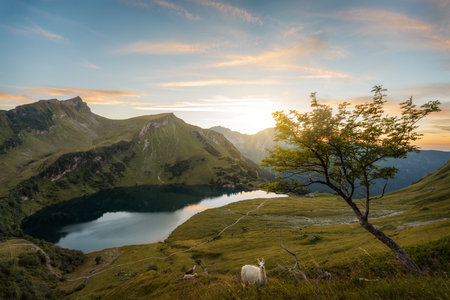Introduction to Eco-Friendly Glamping
Glamping—short for “glamorous camping”—has taken the American outdoor experience to a whole new level. Over the past decade, this trend has evolved from rustic yurts and safari tents to luxurious treehouses and Airstreams, all while bringing guests closer to nature with added comfort and style. But as more travelers seek unique escapes off the beaten path, sustainability has emerged as a defining value for modern glamping destinations across the United States. Today’s eco-friendly glamping sites blend high-end amenities with environmentally conscious design, aiming to minimize their footprint on natural landscapes while maximizing guest experience. This shift reflects a growing awareness among Americans: that luxury and environmental responsibility can—and should—go hand in hand when exploring the wild.
Sustainable Design and Materials
Eco-friendly glamping sites across the U.S. are redefining luxury by integrating sustainability at every level of their design. The core philosophy centers around minimizing environmental impact while maximizing comfort, and this starts with thoughtful selection of materials. From renewable resources to recycled elements and locally sourced products, these sites are setting new standards for outdoor hospitality.
Innovative Use of Materials
Many eco-glamp sites favor renewable materials such as bamboo, reclaimed wood, and cork for building structures and interiors. These options not only reduce the carbon footprint but also blend harmoniously with natural surroundings. For example, canvas tents made from organic cotton or hemp provide durability and breathability without relying on synthetic fibers.
Locally Sourced Elements
By using materials sourced within the region, eco-glamps support local economies and further reduce transportation emissions. It’s common to find furnishings crafted by nearby artisans or platforms built from timber harvested responsibly from local forests. This approach ensures each site has a unique character reflective of its environment.
Examples of Sustainable Structures
| Structure Type | Main Materials | Sustainability Feature | Location Example |
|---|---|---|---|
| Geodesic Domes | Recycled steel frames, polycarbonate panels | Energy-efficient insulation, minimal land disturbance | California Redwoods Retreats |
| Safari Tents | Organic cotton canvas, bamboo poles | Biodegradable fabrics, renewable supports | Montana Eco Ranches |
| Tiny Cabins | Reclaimed wood, low-VOC paints | Reuse of existing materials, healthy indoor air quality | Pennsylvania Forest Lodges |
| Treehouses | Sustainably harvested timber, recycled metal fasteners | No ground-level foundations required, habitat preservation | Oregon Coastal Campsites |
This commitment to sustainable design is more than just a trend; it’s a conscious effort to create spaces where guests can enjoy nature without leaving a heavy footprint behind. As eco-glamping evolves, expect even more creative use of earth-friendly materials that inspire travelers to appreciate—and protect—the wild places they visit.
![]()
3. Green Amenities and Practices
Eco-friendly glamping sites across the U.S. are redefining outdoor luxury by integrating sustainable amenities that strike a balance between comfort and environmental responsibility. One of the most popular features is solar power, which provides clean energy for lighting, charging stations, and even heated showers without relying on fossil fuels. Many glamping retreats also use composting toilets, a practical solution that reduces water waste and recycles nutrients back into the earth—no more guilt about your footprint while enjoying a remote setting. Water-saving fixtures like low-flow showers and faucets are becoming standard as well, ensuring guests can refresh themselves with minimal impact on local water resources. Some sites go a step further with greywater recycling systems or rainwater harvesting, demonstrating a commitment to conservation that doesn’t compromise guest experience. Together, these green practices allow travelers to immerse themselves in nature’s beauty while supporting a healthier planet—proving that sustainability and luxury can absolutely coexist in the wild.
4. Local Sourcing and Community Partnerships
One of the pillars of eco-friendly glamping is a strong commitment to local sourcing and building authentic community partnerships. By intentionally working with nearby farmers, artisans, and small businesses, glamping sites can provide guests with a genuine taste of place while also uplifting regional economies. This approach not only reduces the carbon footprint associated with long-distance supply chains but also fosters a sense of community and trust between visitors and locals.
How Glamping Sites Source Locally
Many sustainable glamping operations have adopted a “farm-to-tent” philosophy, where seasonal produce, eggs, dairy, and meats are sourced directly from neighboring farms. This ensures that meals are fresh, flavorful, and representative of the region’s unique agricultural landscape. In addition, many sites furnish their tents or cabins with handmade decor created by local artisans—think pottery, woven baskets, or reclaimed wood furniture—that reflect the cultural heritage of the area.
Benefits of Community Partnerships
| Partnership Type | Guest Experience | Community Impact |
|---|---|---|
| Local Farmers | Fresh farm-to-table meals; seasonal flavors | Supports small agriculture; promotes sustainable farming methods |
| Artisans & Makers | Authentic decor; hands-on workshops (pottery, weaving) | Keeps traditional crafts alive; boosts artisan income |
| Regional Businesses | On-site pop-ups (coffee roasters, bakeries); guided tours | Encourages local entrepreneurship; expands business reach |
Sustainable Experiences for Guests
For travelers seeking meaningful escapes, these local collaborations translate into immersive experiences—like harvesting veggies for dinner alongside a farmer or joining a candle-making session led by a neighborhood craftsperson. Many glamping sites also organize excursions with regional guides who share stories about native wildlife, history, and conservation efforts. These thoughtful connections help guests feel rooted in the destination while contributing to a more resilient local economy.
5. Eco-Conscious Activities and Experiences
One of the most memorable aspects of eco-friendly glamping is the opportunity to participate in activities that truly connect you with the natural world. Unlike traditional camping or resort vacations, sustainable glamping sites often curate experiences that promote both adventure and environmental awareness. Guided nature hikes are a staple, led by local experts who share insights on native flora, fauna, and ecosystems. These hikes aren’t just about the views—they help guests understand the delicate balance of the wild and the importance of conservation efforts.
Wildlife observation is another highlight for eco-conscious travelers. Many glamping destinations partner with wildlife specialists to offer safe and respectful viewing opportunities, whether it’s birdwatching at dawn or tracking animal footprints along forest trails. These experiences are designed to minimize disturbance while fostering appreciation for local species and their habitats.
For those eager to take their learning further, eco-workshops provide hands-on education in sustainability practices. Popular sessions might include organic gardening, composting basics, or DIY natural bath products using locally sourced ingredients. Some sites also host talks by conservationists or organize community clean-ups—giving guests a chance to leave a positive impact during their stay.
The beauty of these eco-conscious activities lies in how they blend recreation with responsibility. Guests leave not only refreshed but also inspired to adopt greener habits at home. By making nature immersion both educational and enjoyable, eco-friendly glamping redefines what luxury means in the wild—prioritizing meaningful experiences over material excess.
6. Tips for Responsible Glampers
Luxury and sustainability can go hand-in-hand, especially when you make mindful choices during your glamping adventure. Here are some practical tips for being a responsible glamper, ensuring your wild escape leaves the lightest possible footprint.
Embrace Leave No Trace Principles
The Leave No Trace philosophy is essential for anyone enjoying nature, including glampers. Always pack out what you bring in, dispose of waste properly, and avoid disturbing wildlife or natural features. Stick to established trails and campsites to minimize your impact on the environment.
Choose Eco-Friendly Amenities
Select glamping accommodations that prioritize sustainable practices—think solar-powered tents, composting toilets, and locally sourced building materials. If your site provides eco-friendly toiletries or cleaning products, use them instead of bringing conventional items that may contain harmful chemicals.
Conserve Water and Energy
Even in luxury settings, it’s important to be conscious of resource use. Take shorter showers, turn off lights and electronics when not in use, and reuse towels whenever possible. Small actions like these can add up to significant conservation over time.
Support Local Communities
Opt for local foods and goods during your stay. This not only reduces the carbon footprint associated with transportation but also supports small businesses in the area. Ask your host about farmers markets or local artisans nearby.
Travel Mindfully
If possible, carpool with friends or choose fuel-efficient vehicles when traveling to your glampsite. Consider offsetting your travel emissions through reputable programs if you’re making a longer journey by plane or car.
Share the Experience Responsibly
While it’s tempting to post every moment on social media, remember not to geotag sensitive locations or share details that could lead to overcrowding. Encourage others to follow responsible glamping practices by sharing what you’ve learned.
By adopting these habits, you’ll help protect the wild places you love while still enjoying all the comforts of eco-friendly glamping. Responsible travel is more than a trend—it’s a commitment to future generations and the natural world we cherish.


